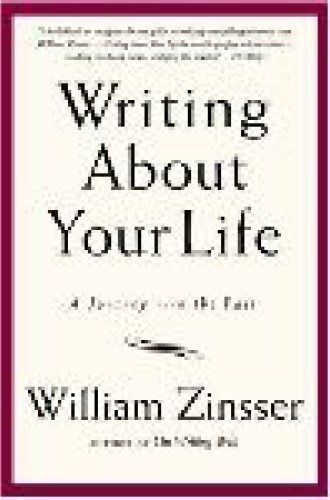Telling your own story
I recently gave a seminar on memoir at a public library in Talladega, Alabama. To emphasize the importance of place in all good storytelling, I asked the audience to write a paragraph describing a room they remembered from childhood. They were to begin by remembering something very concrete: how that room smelled.
“Unguentine!” said the woman who volunteered to read first. “Oh, you all are probably too young to know what Unguentine is.”
“Lord, I remember,” said somebody else. “Yellow stuff. Used to treat burns.”
“That’s right!” said the woman. Then she began to read us the story of her sister’s childhood accident, taking us to a room where the little girl lay in a tent of sheets, swathed in Unguentine. With a poetic choice of language and a focus on a single dramatic moment, a stranger brought her sister and her own childhood self alive. I felt their humanity and began to care about them.
Four years ago I felt the great bird of autobiography roosting in my own brain, crowing at me to tell about myself. I had come through a series of crushing emotional problems, and now that I was feeling much better, I had a very strong hunger to tell my story. I was sure that telling it would be a whole lot easier than living it. The book would write itself, like a magic carpet gliding through the clouds. I would just have to stay on the carpet.
The thing about a magic carpet, though, is that if you once bend down to examine how it works, you’re likely to fall off. Writing about your own life can be the hardest thing in the world. You may hurt or shame any number of people, including yourself. If you don’t think about the consequences at all, you’re bound to do somebody serious harm, but if you think about the consequences too much, you simply can’t write.
So “what is it right for the life writer to do”? Answering this question, says novelist and scholar David Parker, is a major goal of those who write or study memoirs. Parker is a contributor to The Ethics of Life Writing, a volume of essays that examine the act of writing about one’s own life. Each contributor in some way grabs hold of Parker’s question and applies it to a different aspect of autobiography.
Two of the best essays tackle issues of loyalty. Claudia Mills asks whether husbands, children and pals are fair game as subject matter. Richard Freadman wonders whether a father’s ideas of privacy should govern the work of his writer son. In other good contributions, Paul Lauritzen reflects on the ethics of fact-tinkering—does a lie about the details negate the truth of the larger story?—and Diane Middlebrook looks at the dangers of fictionalizing famous people, especially if they happen to be former friends or lovers.
It’s hard to think of a dilemma in life writing that isn’t examined somewhere in this wide-ranging collection. By the end of the book, however, something about all this scrutiny had me steamed. So much self-examination and focus on the act of creativity tends to paralyze an artist, especially a memoirist. It didn’t surprise me to learn that only a handful of the contributors have published anything autobiographical.
I was happy, therefore, to turn to William Zinsser’s new book, Writing About Your Life. Zinsser, author of the now-standard On Writing Well, flips between reflections on autobiography and attempts at writing one. He’s lucky enough to have lived a very interesting professional life: he was a reporter for the New York Herald Tribune, then a professor at Yale, then a baseball writer, and most recently a concert pianist.
The geographical scope of the book ranges from exotic places like North Africa, Tahiti and Burma to a boys’ school in Massachusetts in the 1930s and Princeton during World War II. Readers visit Florida for spring training with the Pittsburgh Pirates and a movie set in New York where Zinsser puts on a clerical collar and acts as an extra in Woody Allen’s Stardust Memories. I wouldn’t have been surprised to hear Zinsser had done a stint as a real priest somewhere along the way.
Between episodes, Zinsser pauses to explain what he’s doing as a writer and to hand out relevant bits of advice. For example:
Think small. . . . Write about small, self-contained events that are still vivid in your memory. . . . If you remember them, it’s because they contain a larger truth that your readers will recognize in their own lives. . . .The only pertinent question about any memoir is: is it a good book or a bad book? If you use memoir to look for your own humanity and the humanity of the people who crossed your life, however much pain they caused you, readers will connect with the journey. . . .
To write a memoir you must manufacture a text. . . . You must never forget the storyteller’s ancient rules of maintaining tension and momentum.
I found that the only way to stay on the carpet of my own autobiography was to concentrate on the work. I had to write my story with all my heart, pouring myself into the art of it and praying that the creative act would have an inherent morality of its own. At first this was just a hope, but I saw the hope fulfilled as my story took shape. Yes, I had to cut out a few hurtful anecdotes before publication, but for the most part my writer’s love of characters (the same love I feel for the people in my novels) kept me from creating vicious or judgmental portraits. I found that there’s a point where art and ethics meet: in the consideration—you might call it the adoration—of the other, of people and things outside yourself.
The ethics of memoir writing is served best, I think, when a memoirist concentrates on the art of story, when she loves writing so much that she forgets herself. She writes not for revenge or even redemption but as a creative gift to the world she imagines will listen. I think it’s no accident that the best memoirs, the ones we want to read again, are also the most outward-looking and the most poetic. Even when they speak of sorrows and great crimes (as Frank McCourt does in Angela’s Ashes and Elie Wiesel does in Night), the writers speak first as artists, foiling evil by making beauty out of its ugliness.




